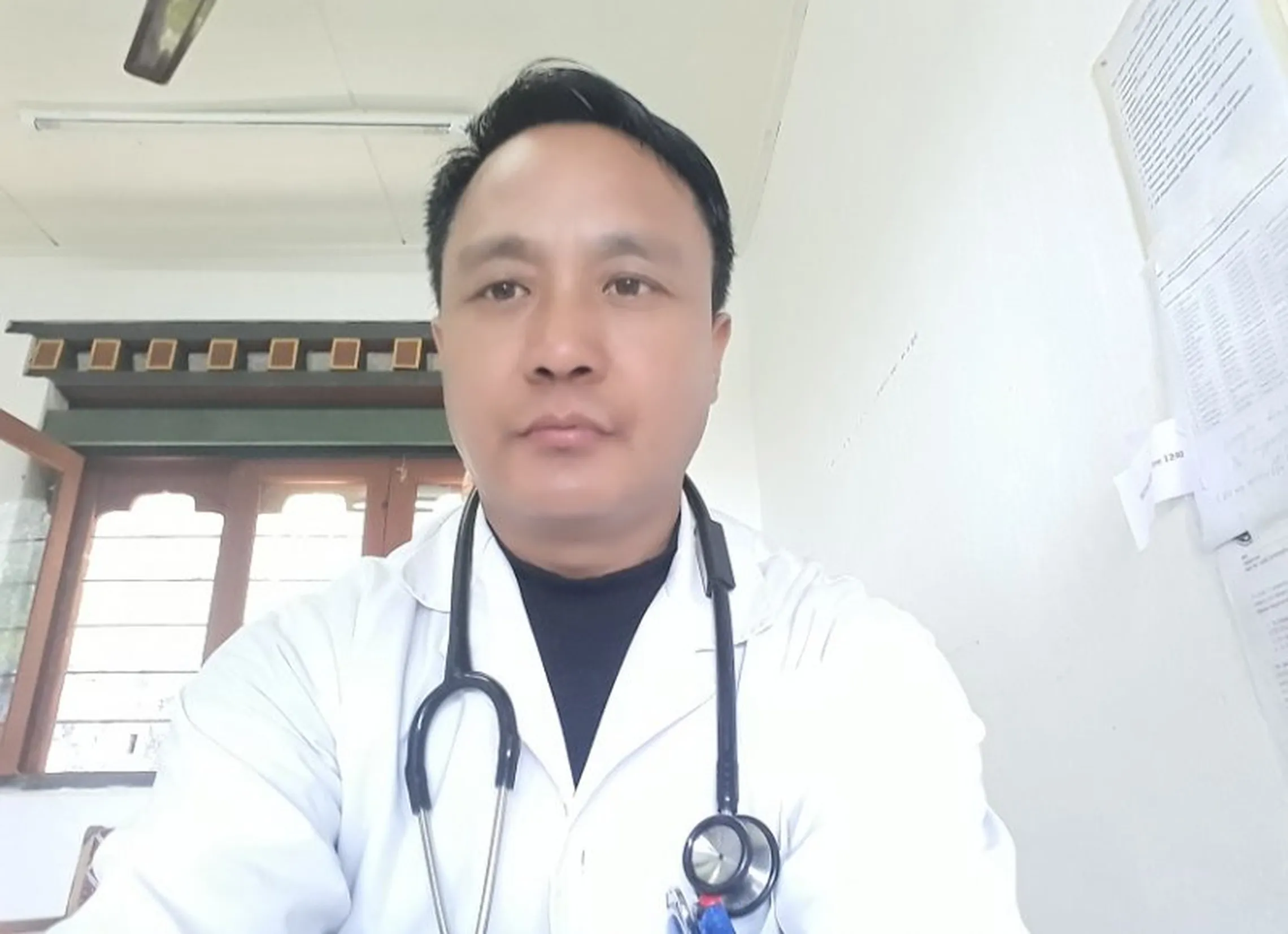Toep: Aum Mindu’s pour flush toilet
A story of sanitation and hygiene success at gewog level by Khandu Sonam, Health Assistant, Thinleygang PHC.

Following the roll-out of the Community Development for Health (CDH) workshop in the Toep gewog (group of villages), all households wasted no time in collecting materials to build a pour flush toilet. But it was different for Aum Mindu, a 75-year old woman living with her 15-year old granddaughter in a small village called Lunjam. She was in no position to build a pour flush toilet herself. This is their household’s story, as narrated by Health Assistant Khandu.
Aum Mindu has been physically unwell for some time now and financial resources have been scarce. Her son in-law passed away when her granddaughter was 12, which led to her granddaughter discontinuing her education. ‘
I would love to have a pour flush toilet but I have no hope and no dream with the situation I am in.’
- Aum Mindu (before toilet construction)
Although the gewog was quick to support Aum Mindu with the materials needed for her pour flush toilet, she had to first discuss the possibility of toilet construction with her 15-year old granddaughter; the household’s breadwinner. This is because actual construction would require Aum Mindu’s granddaughter to divert part of her earnings to build the toilet.

Reporting live from Toep Gewog, Khandu Sonam
After a few months, I returned to the gewog for a community visit to monitor and supervise the sanitation and hygiene progress being made. I was amazed at the progress of the two super ladies! Over-exceeding my expectations, I was surprised to see that their pour flush toilet was 90% complete.
Teary eyed, Aum Mindu said, ‘my hope and dreams came true because of my hardworking granddaughter.’

Toilet in use before sanitation demand triggering

A sturdy and new private toilet for household use; after demand triggering
Following their earlier conversation (about toilet construction) Aum Mindu’s granddaughter has been consistently setting aside Nu. 500 (AU$ 10) from her daily wage. With dedication and a positive attitude, Aum Mindu and her granddaughter’s experience showed that nothing is impossible. In total, the pour flush toilet cost the household approximately Nu. 9,000 (AU$ 180), excluding labour charges.
Celebrating their success, a key take-away message for me is related to the importance of behaviour change and follow-up processes. In my view, although changing behaviour takes time, when you convince people with the right messages and through consistent encouragement, wonders are bound to happen – today and for future generations. The creation of a task force to regularly monitor change and progress is also one success factor that has been key to sustain sanitation and hygiene improvements.
Photos: Photos submitted by author, Khandu Sonam
Notes
[1] In Punakha, Central sanitation and hygiene interventions are supported by SNV, with financing from the Australian Government’s Water for Women Fund.
[2] This story is part of an SNV in Bhutan SSH4A blog series by local government, health care, and community partners. In this series, partners reflect on the success of Community Development Health (CDH) workshops in encouraging villages, sub-districts, and whole districts to prioritise their sanitation and hygiene conditions.
We’d love to hear from you
Contact SNV's Water Team in Bhutan if you're interested to exchange or learn more about effective WASH behavioural change methodologies implemented nationwide.